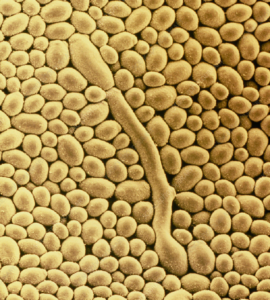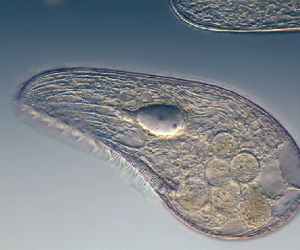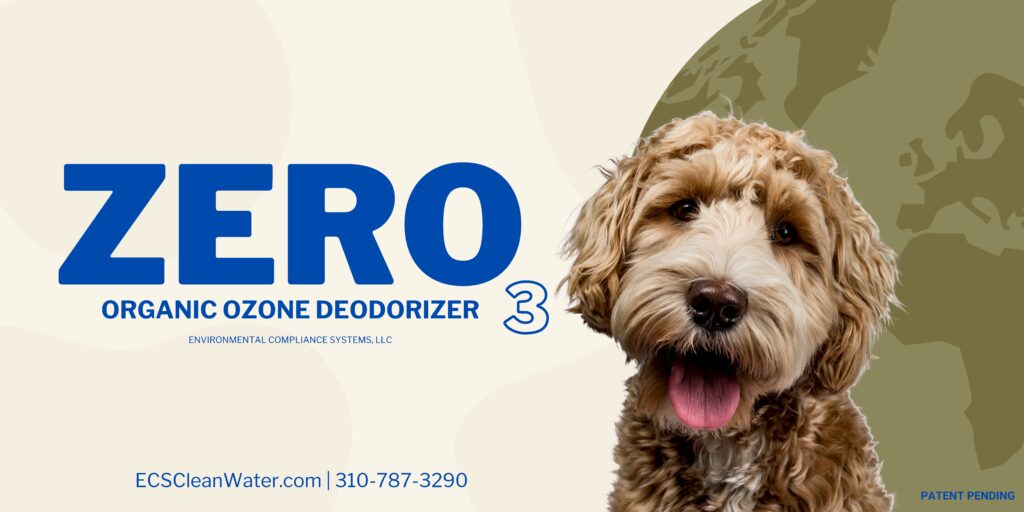Zero Aqueous Ozone Machine Brochure-Information
ZERO3 Aqueous Ozone Machine, uses Ozone which is powerful oxidizing agent. It has remarkable effects on skunked dogs/areas, unpleasant odors and various microorganisms.
ZERO3 is Natural and Organic: Zero3 Ozonated water refers to water that has been treated with ozone. O3 is a colorless and odorless, composed of three oxygen atoms formed by electron discharge which our machine makes. When O3 is dissolved in water, it becomes ozonated water, which is believed to have therapeutic effects, including antioxidant and antimicrobial properties.
ZERO3 is Safe: Aqueous ozone is safe to use. It has a Generally Regarded as Safe (GRAS) designation from the U.S. Food and Drug Administration (FDA) and unlike certain chemicals and antibiotics, it does not contribute to antibiotic resistance. It does not create hazardous by-products.
ZERO3 is ozone is disintegrated in water, it tends to be utilized as an expansive range biocide, obliterating most sores, infections, microorganisms, and different microbes.
Applications: Cleaning and disinfecting of pets, skunk smells, surfaces, work place, floors, cages, exercise rooms, stores, animals, facility or van entrance/exit, during grooming, washing, drying, fecal disinfecting, face, ear, skin, rectum, water & food dishes. skin therapy, food safety techniques, drinking water, dental, etc.
How to use: Just spray the surface you would like to treat, clean or disinfect.
Zero3 high concentration of H20 with O3 produces 1.1 to 1.75 GPM, produces 600 to +750 ppm ozone in water: about 265 to 306 G/hr ozone.
Let’s explore how it interacts with different pathogens:
- Bacteria:
⦁ Bacteria are single-cell creatures with a relatively solid cell membrane. Ozone interferes with their metabolism, likely by inhibiting enzymatic control systems. Ozone concentrations breaks through the cell membrane, leading to bacterial destruction. Ozone punctures the membrane of the bacteria, causing it to blow up and spill its contents. - Viruses:
⦁ Viruses are small particles that multiply only within host cells. Ozone diffuses their protein coat into the nucleic acid core, damaging viral RNA. Common or important viral infections that may come to the attention of pet care professionals are canine parvovirus (CPV), canine distemper virus (CDV), canine influenza virus (CIV), feline panleukopenia virus, feline herpesvirus 1 (FHV-1), feline calicivirus (FCV), feline infectious peritonitis virus (FIPV), feline immunodeficiency virus (FIV), feline leukemia virus (FeLV), and rabies virus infection. By oxidizing the proteins, ozone destroys the protective coat of the virus. - Fungi and Molds:
⦁ Ozone can also inactivate fungi and molds. It can inhibit and destroy some fungi species like Candida, Histoplasma, Aspergillus, Cryptococcus, and Actinomycoses. Their cell walls are made of carbohydrates, proteins, and glycoproteins. This makes them a good site for oxidative inactivation, thus disrupting the cellular organelles. Dogs can be exposed to mold and fungi through inhalation, ingestion, or skin contact.
⦁ Yeast is a live, single-celled microorganism classified as a member of the fungus kingdom. It’s normally found on every dog’s skin, but in small amounts. A yeast infection occurs when a substantial amount of yeast excessively builds up in one area.
⦁ Parasites & Protoza: Unsanitary or overcrowded kennels, pet shops and breeding facilities are commonly contaminated with intestinal parasites. Parks and lawns also provide dogs with opportunities to ingest other dogs’ feces, the most common way that dogs spread infection. A parasite is an opportunist organism that feeds off its host. Protozoan parasites may invade a dog’s intestinal tract and cause infections such as Coccidia and Giardia.
O3 is Proven to Reduce or Eliminate the following. Yeast, Parasites, Protozoa, Mold, Fungi, Algae, Viruses.

YEAST
- Baker’s
- Candida albicans-all forms
- Common yeast cake
- Saccharomyces cerevisiae
- Saccharomyces ellipsoideus
- Saccharomyces sp.

PARASITES & PROTOZOA
- All Pathogenic & Non-pathogenic Protozoa
- Cryptosporidium parvum
- Giardia muris
- Saccharomyces cerevisiae
- Saccharomyces ellipsoideus
- Saccharomyces sp.

VIRUSES
- Adenovirus (type 7a)
- Canine parainfluenza(cpi)
- Canine distemper virus (CDV)
- Canine herpesvirus (CHV)
- Canine adenovirus 2 (CAV2)
- Canine respiratory coronavirus
- Canine Coronavirus
- Canine influenza (CIV)
- Coronavirus
- Coxsackie A9, B3, & B5
- Cryptosporidium
- Echovirus 1, 5, 12, & 29
- Encephalomyocarditis
- Hepatitis A
- HIV
- HPV
- GD V11Virus
- Infectious hepatitis
- Influenza
- Legionella pneumophila
- Poliovirus (Poliomyelitis) 1, 2 & 3
- Rotavirus
- Tobacco mosaic
- Vesicular Stomatitis

MOLD, FUNGI, ALGAE
- Alternaria solani
- Aspergillus candidus
- Aspergillus flavus
- Aspergillus glaucus
- Aspergillus niger (black)
- Aspergillus terreus
- Aspergillus saitoi
- Aspergillus oryzac
- Botrytis allii
- Botrytis cinerea
- Colletotrichum lagenarium
- Fusarium oxysporum
- Grotrichum
- Microsporum canis
- Monilinia fruiticola
- Monilinia laxa
- Mucor piriformis
- Mucor recomosus A & B
- Oospora lactis
- P. chrysogenum & citrinum
- Penicillium cyclopium
- Penicillium digitatum
- Penicillium egyptiacum
- Penicillium expansum
- Penicillium glaucum
- Penicillium roqueforti
- Phytophthora erythroseptica
- Phytophthora parasitica
- Pythium ultimum
- Rhizoctonia solani
- Rhizopus nigricans
- Rhizopus stolonifer
- Rhizopus stolonifera
- Sclerotinia sclerotium
- Sclerotium rolfsii
- Trichophyton mentagrophytes
- T. Verrucosum
- T. erinaceid

BACTERIA
- Achromobacter butyri NCI-9404
- Aeromonas harveyi NC-2
- Aeromonas salmonicida NC-1102
- Bacillus anthracis
- Bacillus cereus
- B. coagulans
- Bacillus globigii
- Bacillus licheniformis
- Bacillus megatherium sp.
- Bacillus paratyphosus
- B. prodigiosus
- Bacillus subtilis
- B. stearothermophilus
- Bordetella bronchiseptica
- Clostridium botulinum
- C. sporogenes
- Clostridium tetoni
- Cryptosporidium
- Coliphage
- Corynebacterium diphthriae
- Eberthella typhosa
- Endamoeba histolica
- Escherichia coli
- Flavorbacterium SP A-3
- Fluorscens (biofilms)
- Leptospira canicola
- Listeria
- Micrococcus candidus
- Micrococcus caseolyticus KM-15
- Micrococcus spharaeroides
- Mycobacterium leprae
- Mycobacterium tuberculosis
- Mycoplasma spp.
- Neisseria catarrhalis
- Phytomonas tumefaciens
- Proteus vulgaris
- Pseudomonas
- Pseudomonas aeruginosa
- Pseudomonas putida
- Salmonella choleraesuis
- Salmonella enteritidis
- Salmonella typhimurium
- Salmonella typhosa
- Salmonella paratyphi
- Sarcina lutea
- Seratia marcescens
- Shigella dysenteriae
- Shigella flexnaria
- Shigella paradysenteriae
- Spirllum rubrum
- Staphylococcus albus
- Staphylococcus aureus
- Streptococcus ‘C’
- Streptococcus faecalis
- Streptococcus hemolyticus
- Streptococcus lactis
- Streptococcus salivarius
- Streptococcus viridans
- Torula rubra
- Vibrio alginolyticus & angwillarum
- Vibrio clolarae
- Vibrio comma
- Virrio ichthyodermis NC-407
- V. parahaemolyticus
Delivery
Gardena, CA 90249
